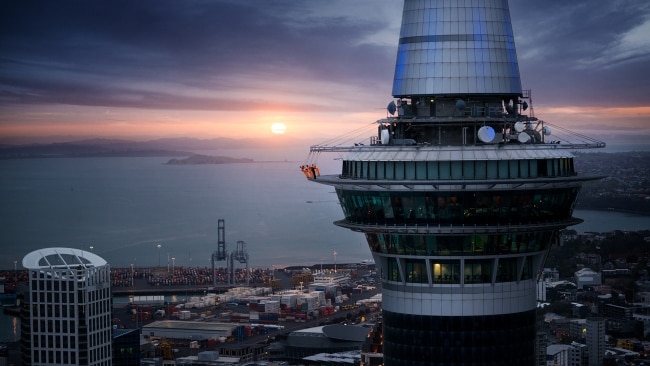Whale sharks a big draw for Ningaloo Reef divers and snorkellers
Dive into the deep with whale sharks on Western Australia’s Ningaloo Reef.

From a spotter plane directing tourists to the vista below, Western Australia’s Cape Range National Park and Ningaloo Reef present like ribbons of extremes. The deep blue of the open ocean gives way to a stripe of coral that melts through oxygenated turquoise waters into white sands, then to a scrubby hinterland rising to a ragged limestone range teeming with kangaroos, wallabies and emus.
But the real action is in the water, where a combination of natural forces creates one of the world’s most dynamic aquatic domains. Ningaloo Reef, Australia’s largest fringing coral reef, is a kaleidoscopic garden home to more than 300 species of fish. Pods of killer whales, or orcas, stalk migrating families of humpback whales, ever ready to pick off the weak. Whale sharks, the world’s largest fish, return to the area to gorge on the annual coral spawn and the explosion of life that results from the mixing of two currents in March or April each year.
The 50km wide and 200m deep Leeuwin Current carries warm water south from Indonesia to mix with the Ningaloo Current bringing cold water north from the Southern Ocean. The whale sharks gather in what is known as the percussion zone on the edge of the reef. Here there is more oxygenated water than further out to sea and plankton is forced to the surface. It’s this concentration of microscopic marine life that draws in the whale sharks to feed.

In the water, the whale sharks are unfazed by swimmers, who travel the globe to share the leviathans’ world. Ecotourism operators communicate with spotters circling overhead in light planes to locate the feeding whales. Eager passengers with goggles and snorkels are delivered gently into the path of the ocean giants. I spent a few hours in the water with whale sharks over several trips.
With their jaws extended, flexing their massive frames as they drift through the tropical surface waters to take in as much plankton as they can, the whales will glide alongside or pass within centimetres, making it easy to study the individual patterns and gaping jaws without disturbing their passage.
If the sharks choose to flick their powerful tail or sink below the surface, they are gone. Up until the mid-1980s there had been less than 350 confirmed reports of whale sharks worldwide despite the species’ lineage tracing back 245 million years and being first described in science in 1828 after its discovery off the South African coast.
Unlike whales, shark are fish and breathe via gills. The name whale shark comes from their size and because they filter-feed like baleen whales such as humpbacks. They usually grow to 12m long but can reach 20m and weigh up to 20 tonnes. Whale sharks have a broad flattened head, rounded dorsal fin and crescent-shaped tail. They have cartilage instead of bone, making them a true shark.
The body is decorated with a “chequerboard” pattern of spots and stripes on a darker background; researchers say this might serve as camouflage from predators in the dappled ocean light. As sharks have good eyesight, scientists think it is also possible the distinct markings serve a purpose in social activities such as mating displays.
Researchers at Ningaloo have been recording whale shark sightings and tracking their individual movements when they leave the area to try to gain a better understanding of their behaviour. Although they are most often seen swimming close to the surface, whale sharks can dive to depths of 700m and travel thousands of kilometres over several years.
They travel throughout the Indian Ocean and are widely found in Australian waters, where they are protected, including at World Heritage site Ningaloo, and ecotourism guided swims in Western Australia are carefully managed and regulated accordingly.
There’s a lot at stake in getting the balance of conservation and tourism right, but there is no doubt that an underwater encounter with these docile creatures is a rare privilege indeed.
This is an edited extract from Wild Beauty: A Photographic Field Guide to Australia’s Biggest, Oldest and Rarest Natural Treasures by Graham Lloyd and Vanessa Hunter (Hardie Grant Travel, $49.99).




To join the conversation, please log in. Don't have an account? Register
Join the conversation, you are commenting as Logout